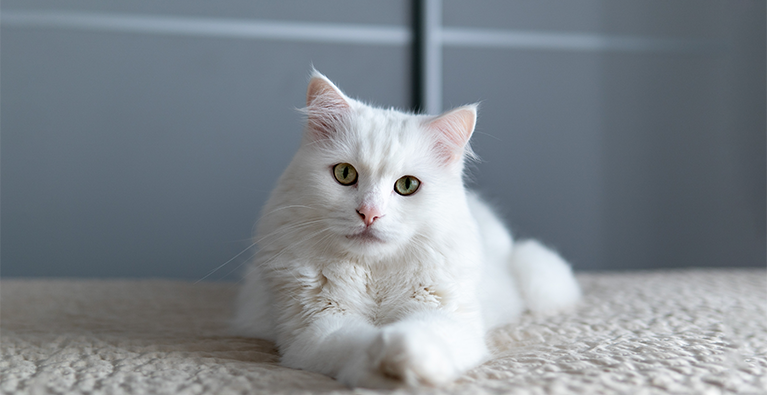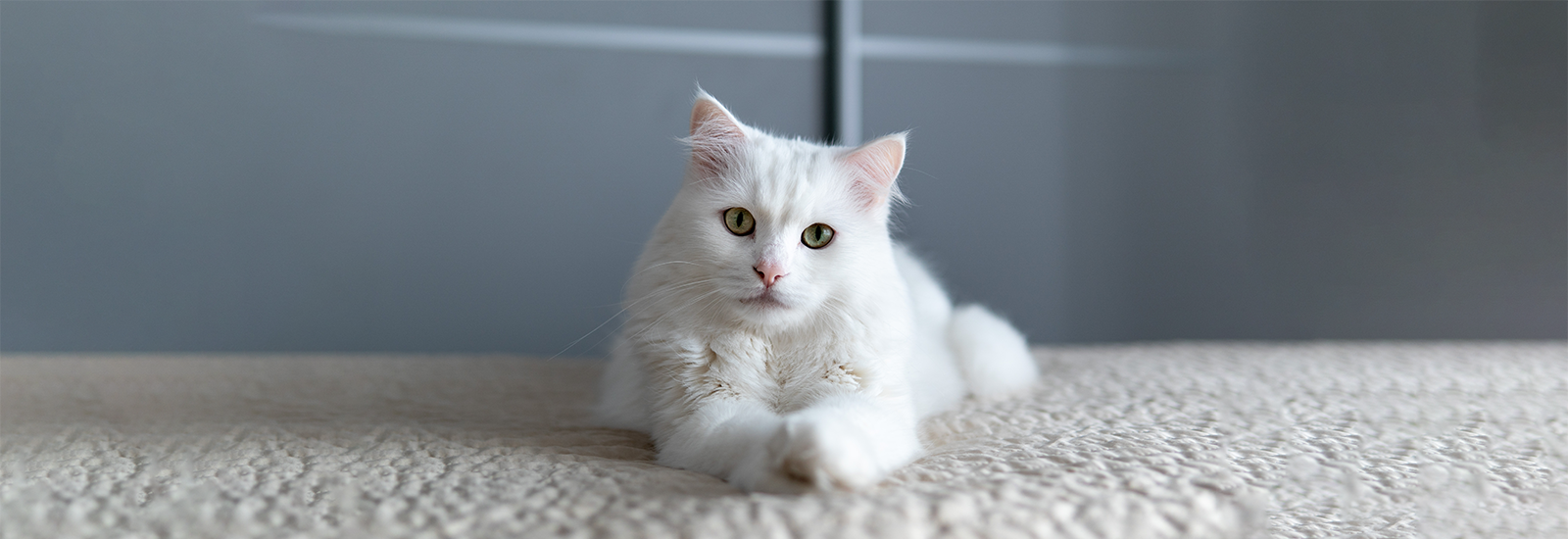Turkish Angora
In former times, this long-haired beauty from Turkey was only available to sultans, but today anyone can enjoy having a Turkish Angora. However, it is not so easy to get hold of a purebred specimen of this fairly rare breed of cat.
Profile of the Turkish Angora
- Size medium
- Weight female: approx. 3.5 kg, male: approx. 4 kg
- Origin Turkey
- Build slender, graceful, sleek
- Length of fur medium-long
- Colour of fur all colours (no “points”)
- Grooming minimal
- Behaviour playful, affectionate
- Character inquisitive, easy-going
Appearance and character of the Turkish Angora
Up until the last century, the Turkish Angora could only be found in plain white. However, because of the associated health risks, it was decided to move away from this standard. Today, the breed standard states that all colours are permitted, with the exception of “points”. The Turkish Angora can therefore now be found in a range of colours from plain white to red and black. It can also have two or three colours, and be spotted or have other markings. There is something for every taste. However, there is no short-haired variety. The beautiful long fur of this breed is, after all, one of its hallmark characteristics. It is very fine, with a silky lustre and can be a little wavy. The Turkish Angora does not have an undercoat; it nevertheless looks very impressive thanks to the ruff of fur around its neck and its fluffy tail. Its body is well proportioned; its movements are graceful and sleek and its hind legs are slightly longer than its front legs, while its head is relatively small. However, it has large ears and big almond-shaped eyes.
The Turkish Angora is not only beautiful, but also has a lovely character: it is easy-going and alert and it loves cuddles. One moment it can be very affectionate and clingy, while the next it can be full of beans and eager to play and run around the room. It is also a very talkative breed, so things are never boring when it is around.
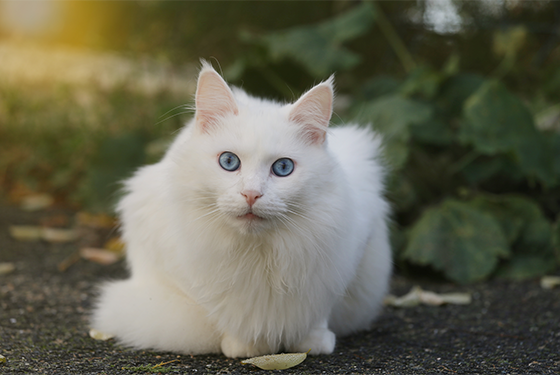
Keeping and caring for a Turkish Angora
Life with a Turkish Angora is not at all problematic. It has no special requirements. There is just one thing it does not like – being left alone all the time. If this is likely to occur on a regular basis in your home then it is advisable to have two cats. They will then always find plenty of ways to pass the time together while they wait for their humans to return. They are very people-orientated, so even if you have two cats you should plan plenty of time for cuddles every day. This together time is important to them and they may insist on it. This can also happen when they are in the mood to play. You should then reach for a cat fishing rod toy or other playthings and simply enjoy some fun mutual activities. A cat tree that reaches up to the ceiling is ideal here. This is perfect for racing up and down. It also provides a perfect view for your pet and an undisturbed place to retreat to when desired. They do not need to go outside if they have plenty of variety in their home. However, some really enjoy being outdoors or in the fresh air.
Grooming is less complicated than it may at first seem. Although the Turkish Angora has a medium-long coat, it has no undercoat. The advantage of this is that the coat does not become matted so quickly. In addition, the amount of fur is less than that of a Persian cat, for example. The coat should nevertheless be combed regularly, especially during moulting. This provides welcome support for the cat. It also reduces the risk of it swallowing too much hair, which can cause problems in the gastrointestinal tract.
Nutrition
Whether it’s a kitten, an adult cat or a senior – the food for a Turkish Angora cat should always be of high quality and tailored to its age. Cats are carnivores by nature, so cat food should always contain a high proportion of meaty ingredients. Sugar, flavour enhancers and artificial colourings and preservatives do not belong in the food.
animonda has the ideal food for every stage of your cat’s life. You can choose between kitten, adult and senior cat food. The products are specially formulated to meet the specific nutritional requirements of the different life stages of cats. This provides the best foundation for your pet to enjoy a long and healthy life.
Health
Pure white animals are most at risk of developing a disease. This applies not only to this breed of cat, but to cats in general. This is because of the mutation of the pigment genes that result in the colour white. This increases the cat’s predisposition to hearing loss or blindness. It was also the primary reason why the breed standard was revised at the end of the 20th century so that white was no longer the only coat colour permitted.
In order to produce healthy animals, responsible breeders always have genetic tests carried out on their cats and exclude any with health issues from breeding. Make sure that you find a reputable breeder who is able to document their commitment with health certificates.
Despite preventive health care, illnesses can occur. These include ataxia. This is a disability that results primarily in balance disorders. Affected cats have an unsteady stance and can fall over when walking. There are different forms of ataxia and therefore different types of therapy. It is often possible to improve the cat’s condition, although adjustments in the home will usually be necessary. For example, a carpet makes walking much easier than slippery tiles or laminate flooring. Stairs should be closed off, litter trays should not have a high rim and food bowls should ideally be placed in a raised position.
History and breeding
Pure white animals are most at risk of developing a disease. This applies not only to this breed of cat, but to cats in general. This is because of the mutation of the pigment genes that result in the colour white. This increases the cat’s predisposition to hearing loss or blindness. It was also the primary reason why the breed standard was revised at the end of the 20th century so that white was no longer the only coat colour permitted.
In order to produce healthy animals, responsible breeders always have genetic tests carried out on their cats and exclude any with health issues from breeding. Make sure that you find a reputable breeder who is able to document their commitment with health certificates.
Despite preventive health care, illnesses can occur. These include ataxia. This is a disability that results primarily in balance disorders. Affected cats have an unsteady stance and can fall over when walking. There are different forms of ataxia and therefore different types of therapy. It is often possible to improve the cat’s condition, although adjustments in the home will usually be necessary. For example, a carpet makes walking much easier than slippery tiles or laminate flooring. Stairs should be closed off, litter trays should not have a high rim and food bowls should ideally be placed in a raised position.
You may also like this

Feeding kittens - nutrition tips
What small kittens need for healthy development

Good cat food
How to recognize good cat food for your darling
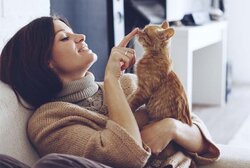
A kitten is moving in
Tips for collection, initial equipment and settling in
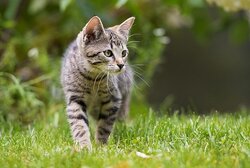
Getting your cat used to being outdoors
This is how you get your cat used to being outdoors
